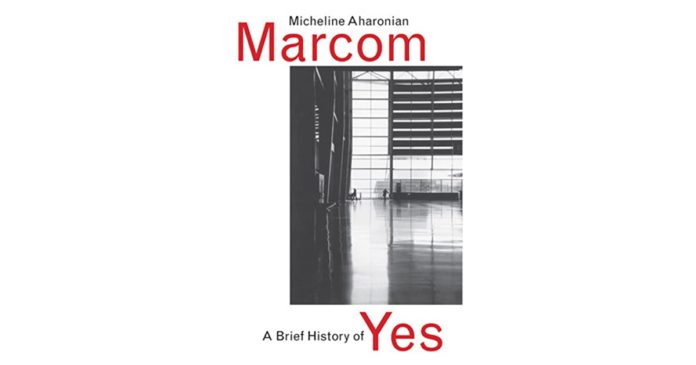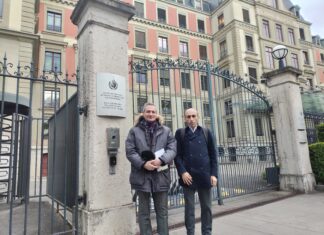Micheline Aharonian Marcom’s a brief history of yes (Dalkey Archive Press, 2013) is the story of two lovers, the blond-haired, blue-eyed American man and the dark-eyed, dark-haired girl from Portugal, who say yes when they first meet at The Twin Bar in Lisbon, Portugal’s capital city on the Tagus. The book starts, as it also ends, with the break-up of the one-year-long affair (August-to-August), by and by the lovers being exiled from yes. “Nothing” happens in between: The lover “arrives departs arrives again until all things eventually arrive at their end.” Nonetheless, Marcom holds the reader through the 119 pages of her novel with the haunting repetitions of the blue-eyed American’s, “You are not right for me,” “I never loved you,” “Why don’t you laugh more,” and Maria’s, ”I feel sad,” “I am alone.” The recurring echoes of the white clay city on the Tagus, and Maria’s Pai’s (Dad’s), “Maria, estou com saudades tuas” (“Maria, I miss you”), give the book a mournful rhythm.
a brief history of yes is Maria’s story. It is the story of the girl who brought the sad melancholy look across the Atlantic to America. Maria is torn between the certain knowledge of her lover’s “You are not for me,” “I never loved you,” and the uncertain knowledge of, perhaps “her lover will love her more in time.” To help the reader understand why Maria is always aggrieved and sad Marcom reaches into the deepest caverns of her interior, where “her grief has landed” but “where language does not arrive,” not Portuguese or English.
This underground world is silent yet known, but not to the lover who asks his beloved, “You are quiet, what are you thinking?” In the maze of Maria’s own thoughts and ideas, the abuse from her lover and the abuse she suffered as a little girl at the hands of her Pai, who would pull her pants to her knees and spank her to correct her bad behavior, become one, “with the one always saying you are not right, no good, correct your style, your language, your—.“ With the haunting beauty of her words, Marcom makes palpable this “feeling without a name, not a feeling even.”
The blue-eyed American walks away from love. We share Maria’s pain at being rejected (“He dumped me”), and berated (“Maria, how can you say such a thing”) by the blue-eyed American who did not appreciate her gift to provide succor to her lover. “Maria is left making the song of her suffering the song of her life,” writes Marcom. Aharonian uses the images of the Japanese maple pressed against Maria’s windowpane, whose leaves “will fall off of the branches soon,” and the hermit thrush singing alone its sad song in the grove by Maria’s hilltop house, to evoke this suffering.
a brief history of yes is a sad book, certainly too sad for the blue-eyed American man who would like a “playful and happy girl to sleep with and to love . . .” But it is a beautiful book too. The “glorious song” of the “small brown not-beautiful bird,” who returns to the grove every year on his way South, might be a sad song, but it is the song of “all of the world, its beauty, its growth and decay.” Perhaps sorrow is the essence of joy, as the visionary poet Kahlil Gibran never ceases to remind us. “I have heard the sigh of those in yearning and longing and it is sweeter than the sweetest melody,” writes Gibran. Maria too knows “that inside of yes is death also, always,” “the meeting of the lovers inevitably the unmeeting.”

There is not much of love’s joy in a brief history of yes, only love’s pain. “Isn’t it possible to be happy?” wonders Maria. Yet, the novel is a validation of life. Even if the lover doesn’t see the sadness and the grief and says, “not-in-love to the love she had for him;” even with the memory of the old country and Pai’s “you-are-not-rights . . . no-goods;” “even this, even all of it, you must love,” writes Marcom. Maria “must return to yes.” (italics mine)









